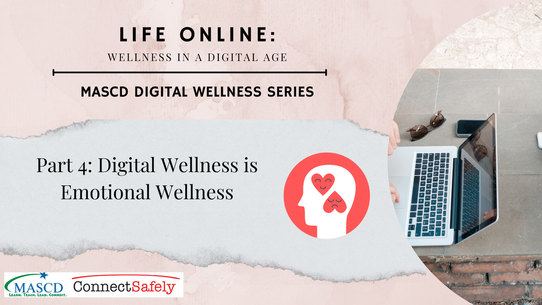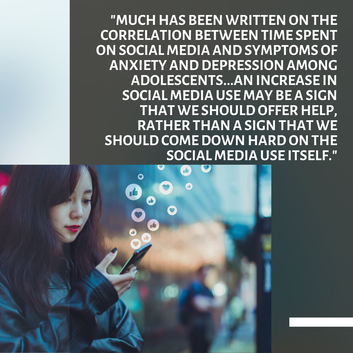Emotional wellness is an area our society is, thankfully, working to build awareness and progress. In schools it is often called “SEL” or social emotional learning and it is sometimes the focus of “self care” content in popular media. Emotional wellness refers to our ability to notice, name, work through, and then reflect on our emotions. Are there situations, relationships, or behaviors that correlate with certain emotions? When our emotions are most intense, are we able to manage our behaviors and words in a way that is both authentic to ourselves and respectful to others? We should be able to answer these questions for negative, positive, and every emotion in between. As you read in the first three articles in this series – What is Digital Wellness?, Digital Wellness is Physical Wellness, and Digital Wellness is Cognitive Wellness – I am exploring how our use of digital media, tools, and devices can impact our overall well-being in positive and potentially negative ways. This post will look at how our use of screens, apps, and other tech tools affects our emotional wellness. Identity and Self-Expression Educators and parents who care for adolescents can agree that we want them to find their place in this world and share their gifts in a way that helps them experience a sense of purpose and belonging. When reviewing the research, the overwhelming conclusion is, “youth use social media in the service of critical adolescent developmental tasks, such as identity development, aspirational development, and peer engagement.” So, the popular mantra that is repeated among adults insinuating that teens and tweens only lose themselves in social media is actually an inaccurate sentiment. Our children still need to engage in physically and cognitively engaging activities like sports, arts, and academics while in in-person environments. However, the American Academy of Pediatrics reports that social media use is associated with “increased self-esteem, increased social capital (resources accessed through one’s social relationships), safe identity exploration, social support, and more opportunity for self-disclosure. These processes are all critical to healthy growth and identity development.” Some questions to ask the adolescents in your life include:
In both of these examples, there was much written about correlation while causation was only theorized. This is disappointing because causation is most important to help us take preventative action and promote emotional wellness for our children. While Twenge and Netflix published for popular consumption, the empirical data from longitudinal studies like this one and this one continue to show that causation moves in the other direction. After following teens over years these studies showed that symptoms of anxiety and depression predicted increased social media use, and not the other way around. What does this mean when we want to support our adolescents? It means that an increase in social media use may be a sign that we should offer help, rather than a sign that we should come down hard on the social media use itself. If your adolescents are spending more time on social media, or even just alone in their rooms with their screen devices, our first instinct should be to ask how they are doing:
Next Steps There is so much more research and many more strategies to help ourselves and our adolescents grow in emotional wellness while using digital platforms and devices. Start by using the strategies I’ve shared here in conversation with the adolescents you care for, whether it is in a classroom or at home. You will get to know them and their online spaces better through these interactions. In turn they will see that you are interested in their emotional well-being. I’m looking forward to seeing you back here soon. Our final Digital Wellness post will tackle our relationships with family, friends, and communities with Community Wellness. Check out other articles in this series: What is Digital Wellness, Physical Wellness, and Cognitive Wellness.
0 Comments
|
Guest AuthorContact us at [email protected] to write for our organization! Categories |
Photo from Mike Kniec




 RSS Feed
RSS Feed